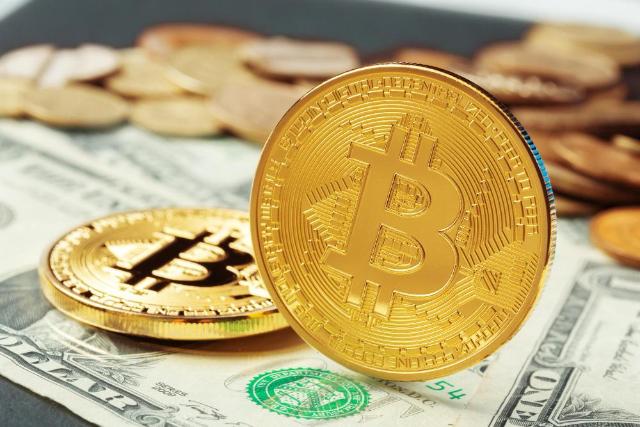Bitcoin after halving - here's what might happen next
The Bitcoin halving continues to make waves across the crypto community, with everyone from analysts to investors, enthusiasts, and even skeptics diving into the conversation. Like previous halvings, this year's event fuelled a surge of speculation, which likely played a role in the increased market volatility leading up to the big day. Now that the halving has come and gone, the initial frenzy seems to have subsided, giving way to a more stable and measured market response. However, many are still keeping a close eye on Bitcoin's long-term trajectory, as the effects of the halving may unfold gradually over time.
But of course things are never really quiet in the crypto market, not even when everything seems to go smoothly on the surface. Behind the apparent quietude, the buzz continues as everyone is patiently waiting to see what might happen next. Will Bitcoin go on a bull run as many have been anticipating? How long will it take for the crypto to pick up pace this time? Is it a good idea to buy Bitcoin online immediately after the halving? How high can Bitcoin go in the months to come? These are some of the questions floating around in people’s heads at the moment.
The fourth halving at a glance
The Bitcoin halving went down so swiftly and quietly that many didn’t even register it happened. There was no bang or massive price swing announcing its coming and passing. It was rather an understated event with no immediately noticeable consequences. But this doesn’t mean the development is inconsequential or overrated. Quite the opposite. The pre-scheduled reduction has far-reaching implications for Bitcoin’s future and the entire crypto market for that matter. However, the effects are not instant but manifest over time. So, let’s see what has happened so far.
Bitcoin’s fourth quadrennial cut occurred on April 19, marking the beginning of a new mining epoch for the main crypto. When the block count reached 840,000, the network’s in-built deflationary mechanism went into motion and split the reward for mining new blocks in half. This means that the reward rate dropped to 3.125 BTC from 6.25 BTC.
Since Bitcoin’s algorithm is designed to automatically trigger the reduction every 210,000 blocks, or once every four years according to calculations, this is the amount miners will receive for validating and adding new blocks onto the blockchain from now until the next halving event takes place, sometime in 2028. Therefore, miners are the first entities to feel the effects of the Bitcoin halving as minting new coins becomes less profitable. Nevertheless, a considerable increase in Bitcoin’s price could offset the diminished block rewards and the higher costs associated with mining.
Approximately one week before the halving took place, the Bitcoin price slumped from $67,000 to $62,000, which put the block reward for successful miners at around $387,500 per block. The halving didn’t cause much commotion in Bitcoin’s price chart as its trading value remained steady around the $63,000 price point.
At the time of writing, Bitcoin was standing at $64,456, with a market cap of $1,269.18B. All in all, Bitcoin’s trajectory has been rather uneventful since the halving was completed and there are no indications of significant changes in the future.
What’s coming next
Most analysts seem confident that Bitcoin is in for a considerable price appreciation in the near future. With a hard cap of 21 million coins and less than 2 million left to be mined and these regular halvings gradually decreasing the rate at which new coins are issued, this artificially created scarcity is supposed to push Bitcoin’s price up.
This theory is also supported by the data from Bitcoin’s previous halvings in 2012, 2016, and 2020 which shows that every reward slash experienced by Bitcoin so far preceded a bullish cycle. While the time frame differs from one halving to another and the price rise wasn’t linear, Bitcoin eventually ended up hitting new all-time highs after each halving.
However, despite historical prices showing a significant price surge in the months after the technical update, the correlation between the reward rate cut and Bitcoin’s price performance is not as simple and clear as some make it to be, given that Bitcoin suffers the influence of numerous other factors, including macroeconomic conditions and global events.
The fact that this time Bitcoin recorded a new peak of $73,000 weeks before the halving also seems to suggest that other market events might weigh more in the balance than the halving itself. There have been ample changes in the crypto market since the 2020 halving occurred.
Only this year, the industry passed a major milestone with the authorization of spot Bitcoin ETFs by the U.S. Securities and Exchange Commission in January, giving cryptocurrencies more legitimacy as an investment asset and making it easier for institutional and retail investors to delve into the crypto market. The positive sentiment is likely to fuel a price rise for the two leading coins which could propagate throughout the entire market.
Final thoughts
The Bitcoin halving is now another event that went down in crypto’s history book, but its effects are far from over. In fact, the market has yet to adjust to this shift in supply-and-demand dynamics, so it’s going to take a while until we can see and assess the full impact of this milestone in Bitcoin’s evolution. Until then, we can only check the charts and keep our fingers crossed for a positive outcome.

